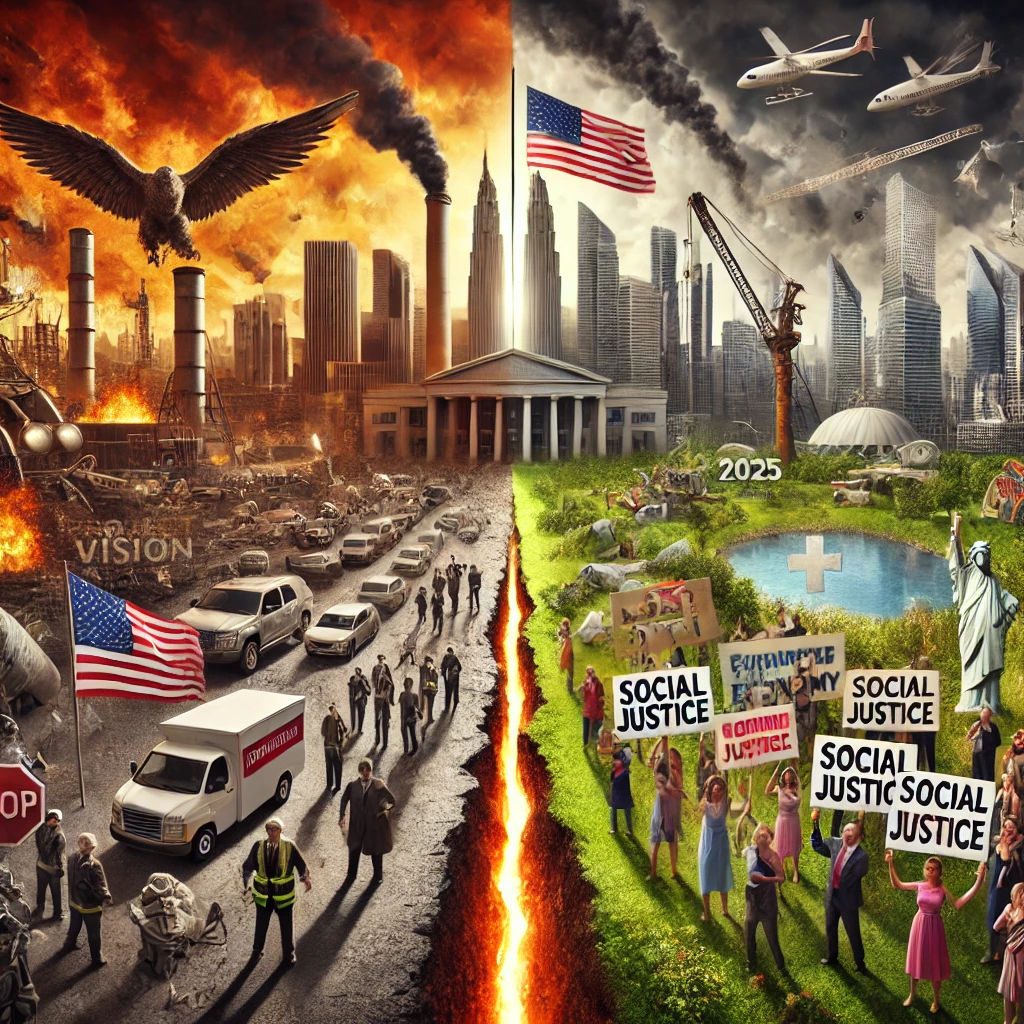In the realm of political ambition and grand visions, few initiatives have captured as much attention and speculation as Project 2025. Championed by a coalition of conservative think tanks and policy groups, this comprehensive blueprint for America’s future seeks to reshape the nation’s governance and societal fabric. As we stand on the precipice of this ambitious endeavor, it’s imperative to dissect its meaning, potential fallout, and the projected output.
The Meaning Behind Project 2025
At its core, Project 2025 is an audacious plan aimed at realigning America with a specific ideological vision. Spearheaded by organizations like The Heritage Foundation, the project envisions a future where conservative principles reign supreme in every facet of government. From economic policy to social issues, the overarching goal is to restore what proponents view as traditional American values and to dismantle what they perceive as the overreach of liberal policies.
Central to this project is the belief that America has strayed from its foundational principles of limited government, personal responsibility, and free markets. The plan seeks to reverse this trajectory by implementing a series of policy changes designed to reduce federal power, increase state sovereignty, and promote individual liberties. This vision is underpinned by a deep skepticism of federal intervention and a conviction that a return to conservative governance is essential for the nation’s prosperity and moral integrity.
The Fallout: Potential Risks and Controversies
The sweeping nature of Project 2025 has inevitably sparked significant controversy and concern. Critics argue that the project’s proposed policies could exacerbate social inequalities and erode civil liberties. Key areas of concern include its approach to healthcare, education, and environmental regulation.
One of the most contentious aspects is the proposed overhaul of the healthcare system. The plan advocates for reducing federal involvement and increasing private sector competition. While supporters argue that this will lead to more efficient and affordable healthcare, opponents fear it could result in reduced access to essential services, particularly for the most vulnerable populations.
Education policy under Project 2025 also raises alarms. The initiative promotes school choice and voucher programs, aiming to empower parents and increase competition among schools. Critics, however, warn that this could undermine public education, diverting much-needed funds away from public schools and exacerbating educational disparities.
Environmental policy is another flashpoint. Project 2025 calls for rolling back numerous regulations, arguing that excessive environmental controls stifle economic growth. Opponents contend that this could lead to increased pollution and long-term damage to public health and the environment.
Moreover, the project’s stance on social issues such as LGBTQ+ rights and immigration has ignited fierce debate. The plan’s conservative approach to these issues is seen by many as a rollback of hard-won rights and protections, potentially fostering a more divided and polarized society.
The Output: What Could Project 2025 Achieve?
Despite the controversies, proponents of Project 2025 argue that its successful implementation could yield substantial benefits. They envision a leaner, more efficient government that better respects individual freedoms and promotes economic growth.
Economically, the project aims to unleash the full potential of the free market. By reducing taxes, cutting regulations, and promoting entrepreneurship, supporters believe that Project 2025 could spur innovation, create jobs, and increase national prosperity. They point to historical examples where similar policies have led to periods of robust economic growth and argue that a return to these principles is necessary to rejuvenate the American economy.
In terms of governance, Project 2025 aspires to restore a balance of power between the federal government and the states. By devolving more responsibilities to state and local governments, the plan aims to make governance more responsive and tailored to the unique needs of different regions. This, advocates argue, could lead to more effective and efficient public services.
Furthermore, the project’s emphasis on personal responsibility and individual liberties is framed as a means to empower citizens. By reducing dependency on government programs and encouraging self-reliance, Project 2025 aims to foster a culture of accountability and resilience.
Project 2025 stands as a bold and contentious vision for America’s future. Its meaning is deeply rooted in a conservative ideology that seeks to recalibrate the nation’s trajectory towards what its proponents see as its foundational principles. However, the potential fallout, encompassing risks to social equity, public health, and environmental sustainability, can not be ignored.
As we ponder the output of such an ambitious project, it is clear that Project 2025 could profoundly reshape the American landscape. Whether this reshaping leads to a revitalized, prosperous nation or a divided, unequal one will depend largely on the nuanced implementation of its policies and the willingness of Americans to engage in constructive dialogue and compromise. The stakes are high, and the journey ahead promises to be as challenging as it is transformative.
What do you think about it? Comment below.

